
Fraser Harrison, author of Infinite West: Travels in South Dakota spoke to an audience at the South Dakota Festival of Books on Saturday, September 29, 2012. If you missed his talk, here is the transcript; if you were there, feel free to enjoy it once again!
Take on South Dakota
I’ve been asked to speak on the theme of an Englishman’s take on South Dakota? The title is not mine, but was dreamt up by the festival organizers. I may be wrong, but can I hear in its phrasing the faint sound of polite astonishment? I think the title really means, what on earth brings you here, to a place like this? There is a modesty implied in the title, mixed with incredulity, and a touch of pride. It is asking, “What do you think of us?” because the word, “take” means more than mere “impression”; it also means “interpretation” or even “verdict.”
So what is my take?
My book begins with words that are reassuringly respectful, even a little groveling. “This book,” I say, “is an homage to South Dakota.” I then add that the place has preoccupied me on and off for the last twenty years, causing me to return again and again. Under this dubious warrant, I also claim the right to mix a little criticism, even exasperation, in my homage.
Despite my many visits and my modest pretensions to expertise, I am still a tourist—and happy to be so. However, I am a tourist with a special interest in the history of the state, an interest that chimes with South Dakota’s commercial interests, for, in case you didn’t know it, tourism is rapidly overtaking agriculture as the state’s biggest business.
Tourism does strange things to places, and even stranger things to history, of which it is a notoriously untrustworthy interpreter. But then tourism is not a branch of academe and owes as much loyalty to profit as to truth. Its job is to attract visitors, and in doing so it often glamorizes heroes who had feet, if not whole legs, of clay (Custer, for example), and it tends to suppress material that is likely to offend or repel.
On the other hand, South Dakota’s history is a precious communal legacy that should not be squandered for commercial purposes. I am interested in the way that tourism, and everyone implicated in it, has chosen to present the state’s historical legacy to its visitors. In that sense my “take” on South Dakota is a take on the state’s own take on itself. I have set out to make a portrait of my subject, only to find that it has arrived at my studio in full costume and make-up.
First trip
My first trip to South Dakota was made in 1992. At that time I was teaching at St. Olaf, the college of liberal arts in Northfield, Minnesota, an illustrious institution, to be sure, but by the time spring break came around in March my family and I were ready to escape. On the basis of nothing more reliable than a few brochures about the Black Hills, we chose to drive west.
I don’t know what we were expecting, but as we drove over the Missouri River at Chamberlain and confronted the landscape of the Great Plains for the first time, I knew I had crossed more than a geographical border.
I had been transported back to the Wild West of my childhood.
Wild West of childhood
You probably don’t realize how deeply the Wild West penetrated the imaginations of British children in the late 1940s and 1950s. Every toy store stocked cowboy hats and six guns, and there wasn’t a park in the land where some kid wasn’t filling another kid full of lead. In my case, I found it easy to transform our small suburban yard in Liverpool into the immeasurable prairie, where herds of numberless buffalo roamed, and wagon trains circled and Indians in full war paint lurked behind every petunia. This was the Infinite West!
Badlands
To return to our trip. We drove across the prairie, took refreshment in Wall Drug’s lunatic asylum, and then turned off I-90 and entered the Badlands.
It’s safe to say that none of us had seen anything like it before. Nor had the pictures in our brochure remotely prepared us for what stretched ahead of us. When it came to landscape, we had all been brought up in the Romantic tradition. We were used to responding to spectacles in nature with solemn and uplifting emotions. But what should we make of a landscape that was undoubtedly stupendous, but at the same time . . . bonkers? What to make of sublime rocks that were candy-colored? We had never experienced a geology that could be crumbled to powder. We could have been standing on the face of the moon.
Out there in the desert wilderness, time became as malleable and erratic as the rocks, and the rocks themselves, so far from being lumps of immutable matter, were blooming like flowers. This was less a landscape than a light-hearted experiment, a folly of nature that might be re-assembled tomorrow, or simply rubbed out to make way for something more fanciful.
We seemed to have stumbled on a geological playground, where someone had been fooling around with the rock as if it were Play-Doh, and then spraying the whole lot in psychedelic pastels. If God had ever got high, the Badlands is what he created. Technicolor mud pies. Geology on speed. Nature on acid.
So this was South Dakota.
Deadwood
The next day we drove into Deadwood.
What struck me most forcibly was that here was a city where nothing was what it seemed—and probably never had been.
Contemporary Deadwood trades on its wild and woolly past, the lawless days of ’76. According to its current brochure, “the west doesn’t get any wilder” than this town, and yet it was filled with middle-aged people pottering up and down Main Street with buckets of quarters and wearing cotton mittens to protect their hands. Wild Bill Hickok was famously assassinated here, and no less than three gambling dens claimed to be the original site of his murder, but they were not patronized by cardsharps sitting round baize tables with dance hall girls waiting to spend their winnings. There were tables, but they stood empty while the aging punters donated money to Deadwood by feeding quarters into the hot slots, which we British quaintly call “fruit machines.”
Deadwood, for all its appearance of bawdy homicide, was the most law-abiding town in the West in 1992. No employment here for Wyatt Earp, because to keep their gambling license—a mine that practically digs its own gold—these gambling halls had to be legally as white as snow.
You could say that modern Deadwood represents the American dream at its crudest. The classic account of the American dream embraces a vision of freedom, whereby everybody has the chance of prosperity and success, regardless of background and social class. It’s a democratic vision, though sometimes tempered by the proviso that the promised good life is available only to those who work hard. A crude version is offered by the gold rush, where anyone with a spade can win the dream—crude because hard work is not a condition of striking it rich. Luck, which is also democratic, can provide a short cut to the dream. Likewise, gambling is a vulgar version of the American dream: it’s open to anyone with a quarter, and success is wholly dependent on luck.
As soon as we got back to Northfield, I planned a second trip, more or less retracing my footsteps, which I made with a friend who was a New Yorker but living in Minnesota. He had never been west of his adopted state. South Dakota was still a territory to him, terra incognita in the middle of his own continent, and I don’t think he was so unusual.
By now I was infatuated with South Dakota, much in the way one is infatuated with someone who seems quite unsuitable and likely to bring nothing but trouble. I was lucky. My inamorata has proved to be benign.
Wounded Knee
I made three more western expeditions and learnt a great deal about the state’s nineteenth-century history. This required a radical revision of my childhood picture of American Indians. I also began to see the landscape in a different light.
The appeal of the “cowboy films” of my childhood was enhanced by the landscape that usually played a prominent part, and sometimes became a character in itself, as in the films of John Ford. Vast scenic panoramas were especially appealing to those of us surrounded by an island landscape that was necessarily small-scale, albeit wonderfully various and beautiful. The grandeur and romance of the movie landscape had the effect of exalting the men who rode through it, sometimes undeservedly. It helped to put a dignified gloss on certain chapters of American history that made them appear epic and heroic, whereas in truth they were often squalid and brutal.
Which brings us to Wounded Knee.
How many people here have been to Wounded Knee? Is there anyone here who lives on Pine Ridge?
As those of you who have been there will know, the massacre site, like all places that were scenes of great bloodshed or suffering, is a difficult place to visit, both emotionally and intellectually.
All wars merit honorable commemoration, but the sites of massacres are in particular need of sensitive presentation to the public. In my book I’ve written that everyone should visit Wounded Knee. Why?
Well, I think that when an atrocity occurs it passes into a kind of universal possession, and we all become implicated in the effort to make sure that nothing like it occurs again. That effort can’t be put into practice without understanding the mistakes of the past.
As things stand, the terrible events of December 29, 1890, are unflinchingly described on a large information board near the site, though the site itself is not explained. This is a pity because, in a topographical sense, it is a very legible place, and the unfolding of the massacre is easy to reconstruct by standing on the small hill—now called Cemetery Hill—that overlooks the scene.
As for the cemetery at the top of the hill, where the bodies of the slaughtered Lakota were buried in a mass grave, it too is legible in another sense. It is tragically unkempt and dilapidated.
Some people claim they feel a sense of peace when they visit battlefields and sites of bloodshed. That has not been my experience at Wounded Knee, where a spirit of grief and rage still seems to hang in the air.
It is worth remembering that the Indian wars of the nineteenth century were fought over territory. The people who now live on the land that forms the state of South Dakota west of the Missouri are the residual beneficiaries of those wars. The descendants of the losers may be found on the reservations. Wounded Knee is therefore a historical symbol that belongs to both populations of South Dakota, and its significance deserves to be understood by both sides.
I can only speak for myself, but I suggest that Wounded Knee represents a wound that will not be healed until conditions on Pine Ridge improve.
Mount Rushmore
By way of grotesque contrast, let’s turn to Mount Rushmore, another symbol, but one on which huge resources have been lavished.
Every outsider’s take on South Dakota must embrace Mount Rushmore, not least because the state has identified itself with Borglum’s four heads—“Great Faces, Great Places,” being the state slogan.
For a foreigner the most disconcerting thing about Mount Rushmore is not the heads themselves, surreal though they are, but the American pilgrims who come from all over the union to worship at Borglum’s altar. They appear to treat it not as a shrine to democracy, but as a shrine to patriotism, a very different thing. They approach it with deep reverence, and I have even seen people reduced to tears.
I’ve been trying to think of Rushmore’s British equivalent, a patriotic symbol with sufficient charisma to make us cry. As it happens, we British have recently been enjoying something of an orgy of patriotism, first with the Jubilee and then the Olympics, which contrary to sour expectations was a great success. But for all that, I don’t think the Queen, the flag, or Buckingham Palace cause the British to weep—except occasionally with laughter. We are a cynical lot, and, as is often the way with cynics, we hide a deep streak of sentimentality. It took the death of Princess Diana to make us cry—by the bucketful—but I don’t think that was an outburst of patriotic grief.
The “Shrine of Democracy” was not in fact Borglum’s title, though he didn’t repudiate it. However, his own political ideas were hardly in accord with democracy and its promotion. It’s a matter of record that he was close to the Ku Klux Klan at one time, and his political views involved a crazy vision of the supremacy of what he called the “Nordic races.”
The heads of four individual politicians is surely an odd symbol of democracy, which, if nothing else, is supposed to be a process of universal representation. But then Borglum was less inspired by democracy than the expansion of the union from coast to coast, and each of the presidents chosen for the mountain was thought by him to have served this great cause. Among other things, his mighty sculpture can therefore be seen as the arch symbol of white triumphalism.
Dizzy with self-importance, Borglum imagined his sculpture lasting for “a million years hence,” if not “aeons.” The most striking feature of Mount Rushmore is the tension between Borglum’s mad ambitions for timelessness and the characteristics that make it very typical of its time, that is the 1930s, when the concept of the great leader, who embodied national virtues and aspirations, was more acceptable than it is now, at least in the West.
A proposal to create his mountain sculpture today would be met with great resistance from all sorts of quarters: women, American Indians, ecologists, historians, and so forth, to say nothing of those members of today’s American population who would not think themselves adequately represented by four white presidents.
Contrary to Borglum’s idiosyncratic vision, democracy is an idea that cannot be set in stone, to coin a phrase. Its instruments are living things and must be flexible enough to meet the needs of the people as they change; hence the principle of amending the constitution. Monuments made of rock, whatever the immortal longings of their creators, will always succumb to the fate of Ozymandias and his wrecked statue in the desert. The same destiny awaits ideas that are allowed to petrify.
Harrison
This book would never have been written if I had not had the whimsical idea of visiting my namesake town—Harrison in Douglas county, population less than 50. Seldom has one of my whims been so fruitful.
There are 12 Harrisons in the United States, of which Harrison, South Dakota, is the smallest. As far as I know, I have no connection with any of them. Harrison, South Dakota, was originally named New Orange, because its founders were Dutch émigrés. Hoping to ingratiate themselves with Benjamin Harrison, then an influential senator, the city elders changed its name, but even though Harrison soon became president he did not bestow any favors on the town re-baptized in his honor.
I hasten to say I have no connection with the presidential Harrison either. A pity, because in the eighteenth and nineteenth centuries the Harrisons were as powerful a political family as the Kennedy or the Bush families in the twentieth century, producing not one but two presidents.
In fact, as far as I know, I have no connection with any of the dozens of Harrisons whose names are to be found on graves and markers round the West. For instance, there are Harrisons buried in Mount Moriah Cemetery in Deadwood. A corporal Harrison died with Custer at the Little Big Horn. And two Harrisons died at the Alamo with Davy Crockett in 1836.
Actually, there is a rumor that a third Harrison was also present at the siege, but his name is not found on the roster of the heroic dead. It seems that he sneaked out the night before the battle and saved his skin, thus qualifying as the Alamo’s only coward. His ignominious exit was hushed up, so I was told by a local historian, because he was thought to be a member of the politically powerful Harrison family of Virginia. Perhaps I am related to him, but please don’t tell the Daughters of the Republic of Texas.
I had an interest in the town of Harrison beyond the trivial coincidence of our names. I discovered that a large number of its 50 residents were 65 years old or older. In 2010, when I was planning to sample the delights of South Dakota yet again, I was 65 myself, an age that prompted me to brood on the obvious penalties of old age and its far more impalpable rewards. I decided that if I could arrange it I would talk to these elderly people to find out how they were contending with the same experience.
Thanks to the kindness of the local pastor, I was able to meet half a dozen elderly people who had spent their lives in Harrison. The town had been founded in the 1882 by Dutch pioneer farmers and it thrived, but two decades later, in 1905, it suffered a blow from which it never recovered. The local railroad bypassed the town, and overnight Harrison was consigned to a prolonged, incurable decline.
A common enough story, but illustrative, so it seemed to me, of the fleeting nature of western history. When I was here last year in May, I witnessed the worst floods in living memory, and this year the whole Midwest has been blasted by drought. It was ever thus. Blizzards, dust storms, cyclones, swarms of grasshoppers, flood and drought, drought and flood—nothing has changed since 1882, including, you might think, the folly of those who persist in trying to turn this recalcitrant terrain into farmland. The small family farm of the kind envisaged by Harrison’s pioneers is no longer viable. The elderly residents of the town are the last of a historic type. Their children must migrate again if they want to pursue the same way of life, or choose some other occupation, as most of them have done.
This is certainly one of my “takes” on South Dakota. Looking back over the relatively brief period of modern history on the Great Plains, we see a succession of cultures aspiring to dominance, none of which, Indian or white, ever achieves a completely confident grip on this pitiless geography. In the most recent exchange of power, family farming has given way to agribusiness, but now agriculture itself is yielding to tourism. Meanwhile, in this corner of the state, it looks as if banking, of all things, and other service industries are going to save the old farming communities close to the metropolis by turning them into dormitory towns. Instead of the farmer, the unforgiving weather will now persecute the commuter.
Lewis & Clark
Finally, I must say a word about Lewis and Clark, to whom I have devoted a chapter of my book.
You may find it hard to believe, but the great explorers are virtually unknown in Britain. I have done my best to repair this national aberration by writing about Lewis and Clark whenever I can, and in this book I track them as they made their way up the stretch of the Missouri located in what is now South Dakota.
Here, in the August, September, and October of 1804, they enjoyed the most pleasant days of their trip. Their passage was not without its difficulties, but they had the compensation of eating well because game was exceedingly plentiful. Indeed, from a natural history point of view, this was the richest stretch in their whole journey. Nor had their supply of whiskey yet run dry.
These men, who mostly came from woodland areas in the East, marveled at what they saw on the Great Plains. For the first time they saw prairie dogs, which they called “barking squirrels,” pronghorn antelopes, which they called “goats,” jackrabbits, mule deer, a species of coyote, the great gray prairie wolf. On August 29, 1806, when the expedition was coming down river, they reached the mouth of the White River south of today’s Chamberlain.
Lewis wrote about his afternoon: “I assended to the high Country and from an eminance, I had a view of the plains for a great distance. From this eminance I had a view of a greater number of buffalow than I had ever Seen at one time. I must have Seen near 20,000 of those animals feeding on this plain.”
Lewis and Clark were great explorers, natural historians, cartographers, leaders, and so on—but they were also great writers. When I am on a trip myself and wearily turn on my computer at the end of the day in order to write up my notes, I often think of Lewis and Clark and feel ashamed at my lack of grit. But then I rally, take inspiration from the captains, and write with gusto.
Conclusion
So what is my take on South Dakota?
My book is an inversion of the customary pattern of travel writing. Generally, travel writers make expeditions to exotic places and then report back to their home audience about their adventures and the extraordinary things they have seen. In my case, I am not only visiting a place that is exotic to me, but I’m reporting to the people who live there. I’m holding up a kind of mirror to South Dakota. What appear to be distortions in the reflection may be misapprehensions on my part; on the other hand, they may be features that their owners haven’t noticed before. I like to think that my take is only one side of a mutual conspiracy.
Let me finish by answering the question that was implicit in the title I was given: What on earth brings me back to South Dakota again and again?
My answer is a purely personal one. Everyone has, or should have, a place on their western horizon where possibility seems infinite; not an El Dorado, but a place where the imagination gets rich. For me, that place has become South Dakota.
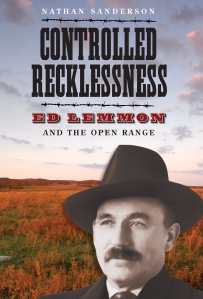 But it’s never too late to learn. That’s why I’ve enjoyed working with Controlled Recklessness, Nathan Sanderson’s biography of stock-raising legend Ed Lemmon. Not only could Lemmon saddle-handle cattle better than anyone else; unlike most cowboys, he also climbed the ladder of success and acquired a significant interest in one of the biggest outfits of its day in West River South Dakota. Sanderson’s book covers Lemmon’s colorful life as both a cowboy and a cattleman, and it taught me, to take just one example, how a roundup actually works. In theory.
But it’s never too late to learn. That’s why I’ve enjoyed working with Controlled Recklessness, Nathan Sanderson’s biography of stock-raising legend Ed Lemmon. Not only could Lemmon saddle-handle cattle better than anyone else; unlike most cowboys, he also climbed the ladder of success and acquired a significant interest in one of the biggest outfits of its day in West River South Dakota. Sanderson’s book covers Lemmon’s colorful life as both a cowboy and a cattleman, and it taught me, to take just one example, how a roundup actually works. In theory.
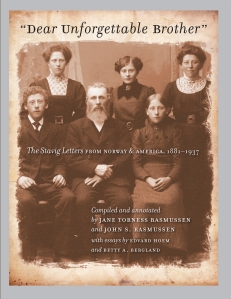
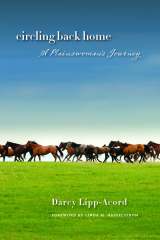
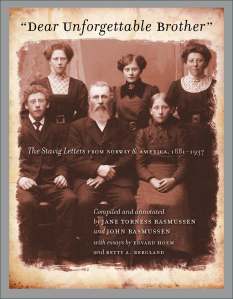



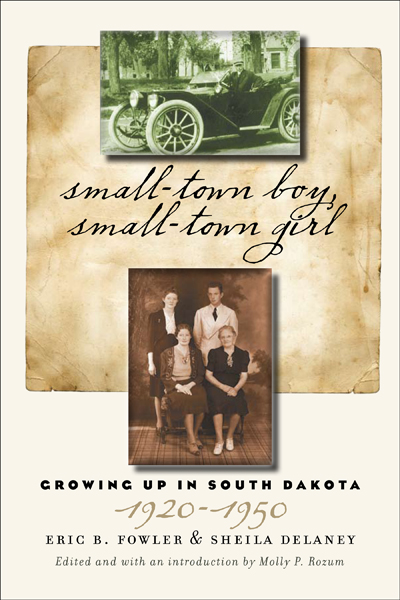
 We’ve received our F&Gs (folded and gathered pages) of
We’ve received our F&Gs (folded and gathered pages) of 